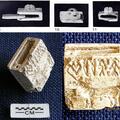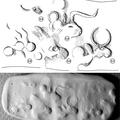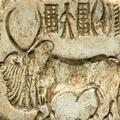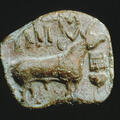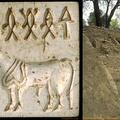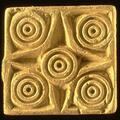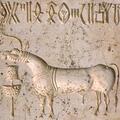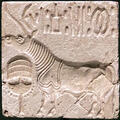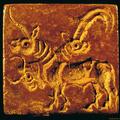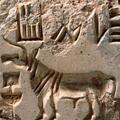Unicorn Amulet Seal
Only a few specimens of this unicorn amulet-type seal have been found. One was during Marshall's excavations at Mohenjo-daro in the 1920s (top), another at Dholavira a few years ago (bottom). It appears to have been worn around the neck, and have had room for something to be put inside.
Although Marshall himself did not favor the amulet theory, he wrote of one of these seals: "The amulet theory finds some support, however, in the shape of ... [a] seal [which] measures 0.77 in. square and 0.3 in. thick, excluding its boss.

